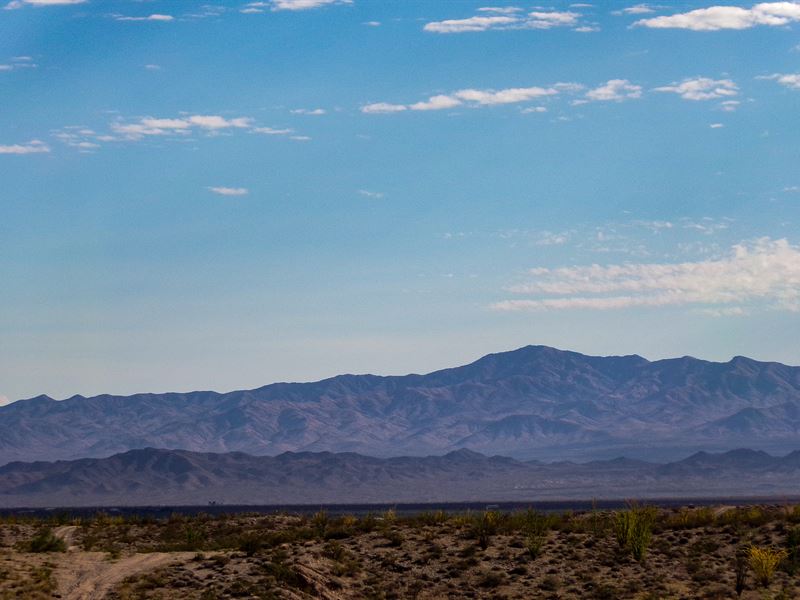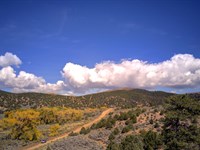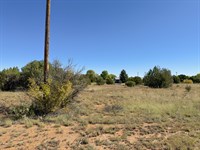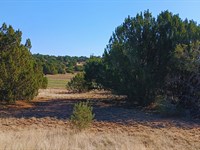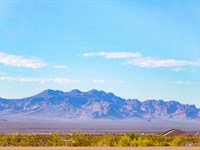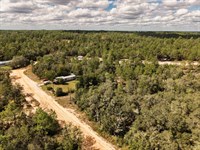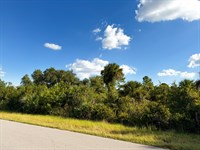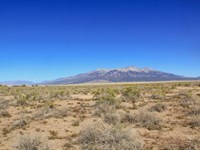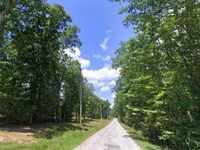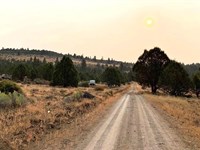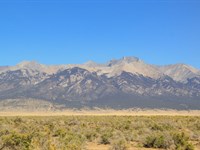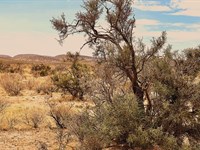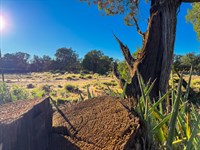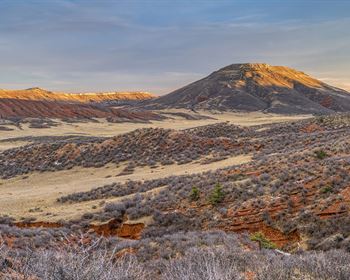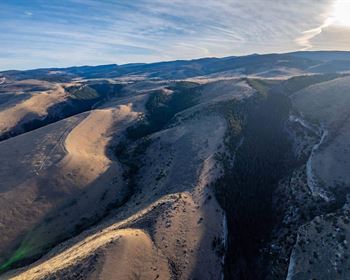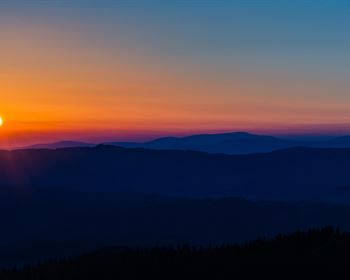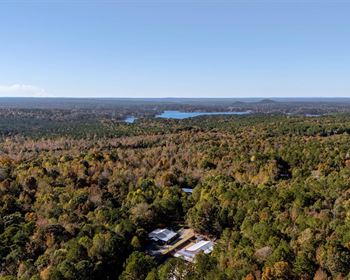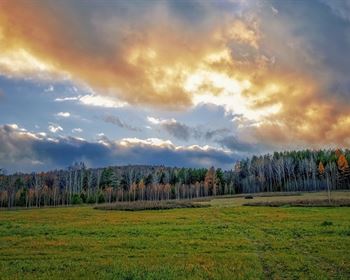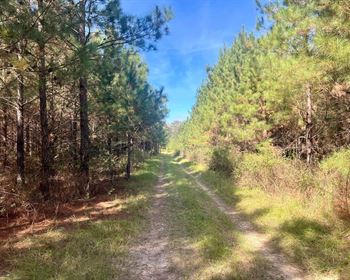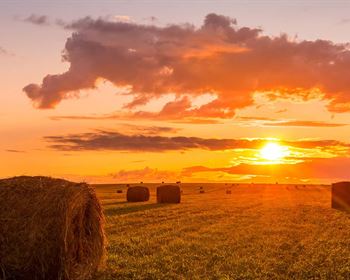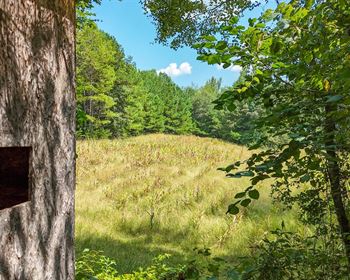Oversize Lot Near Lake Havasu
Yucca, AZ 86438
Mohave County, Arizona
Lot Description
Priced to sell. Neighboring property to the North (same acreage and features) is listed at over $21,000.
Imagine owning 2.36 acres of wide-open Arizona land where you can build the life you've been dreaming about. This property in Havasu Terrace sits in Mohave County, offering you the space and privacy to create your perfect escape. With direct access from Edith Street and less than half a mile from a paved main road, getting here is simple-no fighting rough terrain just to reach your land. A seasonal wash runs along the northern boundary, adding natural character to the landscape, while scattered juniper trees provide shade and a touch of desert beauty. This is raw land ready for your vision, whether that's a weekend camping spot, an off-grid homestead, or a future retirement retreat. The location gives you the best of both worlds: true desert solitude with convenient access to everyday needs. You're just over five minutes from the town of Yucca, where you can grab supplies, fuel up, or handle any errands. Lake Havasu City is within reasonable driving distance for bigger shopping trips, dining, and water recreation on the Colorado River. The surrounding area is perfect for outdoor enthusiasts who love hiking, off-roading, stargazing under dark skies, and exploring the rugged Arizona backcountry. This is high desert country where you can breathe easy and live on your own terms. Whether you want to park an RV, or start construction right away, this land gives you the freedom to do it your way. With no Hoa, you have the flexibility to pursue your vision without restrictions. Bring your plans, your dreams, and your sense of adventure. This is affordable Arizona land that won't last long.
We are open to owner financing as well - here is what that would look like:
Total Money Down: $599 ($349 downpayment + $250 closing cost)
Monthly: $276/Month for 72 months
See Info below.
Subdivision: Havasu Terrace
State: Az
County: Mohave
Zip:
Size: 2.36
Parcel: 245-14-126
Legal Description: Tract: 1041 Havasu Terrace Unit ONE Lot 126
Approximate Lat/Long Coordinates:
34.8428, -114.1357
34.8411, -114.1357
34.8411, -114.1362
34.8428, -114.1362
Annual Taxes: Approximately $59.52/Year
Zoning: Agriculture Residential (Ar)
--- No time limit to build
--- Site Built, Modular, Mobile, and Manufactured Homes Allowed
--- Tiny Homes allowed with special permit classified as RV or mobile home.
--- Full-Time RV Living Allowed: RV shall be connected to an approved wastewater disposal system, and obtain a special permit.
--- RV on the Property While I build: Allowed
--- Camping in a RV Allowed: 14 days max each occupancy, 30 days total for calendar year.
HOA/POA: No
Improvements:
Access: Edith St
Water: Would require a well or alternative.
Sewer: Would require a septic system
Utilities: Would have to contact UniSource Energy Services or use alternative power.
Information presented in this listing is deemed accurate but is not guaranteed. Buyers are advised to conduct their own due diligence and verify all details independently.
Location And Setting Overview
- Your Desert Paradise Near Yucca and Lake Havasu City: This 2.36-Acre property sits in the Havasu Terrace subdivision, putting you right in the sweet spot of southern Mohave County where desert freedom meets practical convenience. You're positioned just five minutes north of Yucca, a small desert town that serves as your gateway to supplies and services without the hassle of big-city living. Yucca itself sits at the junction of Interstate 40 and Highway 93, making it a natural crossroads in this part of Arizona. When you need gas, groceries, or a quick meal, Yucca's got you covered with the basics. But the real advantage of this location shows itself when you look at the bigger picture of what's nearby. Lake Havasu City, one of Mohave County's three main population centers, sits about 35 miles south along Highway 95. That's roughly a 40-minute drive down a well-maintained highway that cuts through classic Mojave Desert landscape. Lake Havasu City brings you everything a modern Arizona city offers - big box stores like Walmart and Home Depot, a full-service regional hospital, restaurants ranging from fast food to fine dining, and of course the famous London Bridge and all the Colorado River recreation you could want.
- The Sacramento Valley Setting: Your property sits in what locals call the Sacramento Valley, a broad desert basin that stretches between the Black Mountains to the west and the Hualapai Mountains to the northeast. This valley represents classic high desert country, sitting at an elevation around 2,000 feet where temperatures stay moderate compared to the scorching low deserts near the Colorado River. The landscape here mixes sandy washes, scattered juniper and creosote bush, and wide-open vistas that seem to stretch forever under that famous Arizona blue sky. The seasonal wash along your northern property line tells the story of how water moves through this desert - most of the year it sits dry and quiet, but when the summer monsoons roll through between July and September, these washes spring to life for brief periods, carrying runoff from the higher country and nourishing the hardy desert plants that line their banks. This is the kind of natural feature that gives your land character and reminds you that even in the desert, life finds a way. The juniper trees scattered across your acreage provide welcome shade spots and add visual interest to what some might call barren desert. These tough trees have been here long before any subdivision was platted, their twisted trunks and aromatic wood perfectly adapted to Arizona's harsh conditions.
- Access and Infrastructure That Actually Works: One of the biggest headaches people face with raw desert land is getting to it in the first place, but this property solves that problem right out of the gate. You've got frontage on Edith Street, which provides direct access to your land without crossing anyone else's property or navigating miles of primitive two-track roads. Even better, you're less than half a mile from paved roads that connect to Highway 93, meaning you can reach your property in a regular vehicle without needing a lifted four-wheel-drive truck. During Arizona's dry months, which is most of the year in this climate, the dirt roads around Havasu Terrace stay firm and passable for standard cars. When the monsoons do hit and things get muddy, having that nearby paved road means you're never truly cut off. This matters more than people realize until they've dealt with truly remote land where a rainstorm can strand you for days. The practical side of this location extends to utilities and services too. UniSource Energy Services provides electric power to developed areas of southern Mohave County, and while you'll need to contact them to determine exact costs for bringing power to your specific parcel, the infrastructure exists in the general area rather than being dozens of miles away like it would be in more remote corners of the county.
- Strategic Position in Arizona's Growth Corridor: When you look at a map of Arizona and Nevada, you'll notice that Mohave County sits right at the intersection of major population centers and transportation routes. Your property in Havasu Terrace benefits from this strategic location in ways that go beyond just convenience - it positions you at a crossroads of opportunity. Interstate 40 runs east-west just north of your land, connecting Los Angeles to the west with Flagstaff and Phoenix to the east. This historic route follows the path of old Route 66 and remains one of America's most important freight corridors, moving goods and people across the Southwest every hour of every day. Highway 93 runs north-south through Mohave County, linking Phoenix in the south to Las Vegas in the north. In fact, the federal government is upgrading this route to become Interstate 11, a future high-speed corridor that will make the Phoenix-to-Vegas drive even more efficient. What does this mean for you as a landowner? It means you're not buying in some forgotten backwater that time passed by. You're investing in a county that sits along major travel routes and serves as a natural stopping point between larger cities.
- The Appeal of Southern Mohave County: The Yucca area and greater Sacramento Valley have attracted landowners for generations precisely because they offer elbow room and independence without complete isolation. You can live your life on your own terms out here - no HOA telling you what color to paint your shed, no city ordinances about how tall your grass can grow, no neighbors three feet from your bedroom window. The Agricultural-Residential zoning on this property reflects the county's understanding that people who choose to live out here value flexibility and freedom. You can put up a manufactured home, build a stick-built house, park an RV while you develop your land, or even run some livestock if that's your vision. The county won't force you to build on any particular timeline, so if you want to buy now and develop later when it suits your budget and life situation, that's completely acceptable.
Recreational Opportunities
- Off-Road Paradise at Your Doorstep: When you own land in the Sacramento Valley area of Mohave County, you're setting up your basecamp right in the heart of some of Arizona's best off-roading country. The Bureau of Land Management oversees hundreds of thousands of acres surrounding your property, and while people sometimes get confused about what BLM land means, here's the simple truth - it's public land where you can ride, camp, explore, and adventure to your heart's content. From your property, you can load up your Atv, side-by-side, or dirt bike and within minutes be cruising sandy washes and rocky trails that wind through classic Mojave Desert landscape. The terrain varies from flat desert floor perfect for opening up the throttle to technical rocky sections that'll test your skills and give you that adrenaline rush. Popular routes in the area include old mining roads that date back to Arizona's prospecting days - these paths snake up into the surrounding hills where miners once searched for gold and silver, and today they offer spectacular viewpoints and a connection to the Old West history that defines this region.
- Lake Havasu - Arizona's Playground on the Colorado River: Less than an hour south of your property, Lake Havasu stretches along the Colorado River offering 45 miles of waterfront recreation that draws visitors from across the Southwest. Created by Parker Dam, this reservoir has become synonymous with Arizona water sports and outdoor fun. If you own a boat, jet ski, or kayak, having this world-class recreation area so close adds tremendous value to your land purchase. You can wake up on your property, hook up the boat trailer, and be launching at one of Lake Havasu's many boat ramps within 45 minutes. The lake features over 400 miles of shoreline when you count all the coves and inlets, meaning you can always find a quiet spot even during busy summer weekends. Fishing on Lake Havasu ranks among the best in Arizona, with the lake holding healthy populations of largemouth bass, striped bass, channel catfish, bluegill, and crappie.
- Hunting Opportunities Throughout Game Management Units: Mohave County spans multiple Arizona Game and Fish Department game management units, and your property near Yucca sits in an area with diverse hunting opportunities for those who value pursuing wild game. Southern Mohave County holds decent populations of desert mule deer that browse the juniper and desert shrub country surrounding your land. Beyond deer, small game hunting near your property can keep you busy year-round. Gambel's quail thrive throughout the Sacramento Valley and surrounding areas, and these fast little birds provide exciting wing shooting when you flush a covey from the desert brush. Quail populations in southern Arizona fluctuate dramatically based on rainfall and monsoon activity. Wet winters and springs produce bumper crops of insects and green vegetation that allow quail to successfully raise large broods of chicks.
- Desert Exploration and Hiking Right From Your Land: Not everyone needs motorized recreation or structured activities to enjoy the desert - sometimes the best adventures come from simply walking out your back door with a water bottle and curiosity about what's over the next rise. The landscape surrounding your Havasu Terrace property invites exploration on foot, where you can truly experience the subtle beauty and surprising life that thrives in this seemingly harsh environment. Early morning and late evening offer the best times for desert hiking when temperatures moderate and wildlife becomes active. The seasonal wash along your property's northern boundary provides a natural hiking corridor where water occasionally flows and vegetation grows thicker than the surrounding desert.
- Stargazing Under Authentic Dark Skies: One form of recreation that urban and suburban dwellers have almost entirely lost is simply looking up at night and seeing the universe in all its glory. Light pollution has robbed most Americans of the opportunity to witness the Milky Way stretching across the sky, to see meteor showers painting streaks across the darkness, to watch satellites slowly tracking across the star field. When you own land in the Sacramento Valley, you're buying a front-row seat to some of the darkest skies remaining in the continental United States. Your property near Yucca sits far enough from these population centers that on a moonless night, the sky absolutely explodes with stars. The Milky Way appears as a bright band of light stretching from horizon to horizon, so clear and detailed you can make out the dark dust lanes running through it.
Wildlife And Hunting
- Desert Mule Deer - The Ghost of the Sacramento Valley: The desert mule deer that inhabit the country surrounding your property represent one of nature's most impressive adaptations to harsh environments. These deer survive and even thrive in landscape that looks inhospitable to large mammals, getting most of their water from the vegetation they browse and bedding down in the shade during the brutal midday heat of Arizona summers. During cooler morning and evening hours, you'll spot them moving through the juniper and desert shrub, their large ears constantly rotating to detect danger. Bucks sport impressive antlers that typically branch in a forked pattern rather than the single beam with tines you'd see on whitetails.
- Javelina - Arizona's Mini Wild Hogs: While technically not pigs despite their appearance, javelina or collared peccaries add a unique hunting and wildlife viewing opportunity to southern Arizona properties like yours. These social animals travel in groups called sounders, typically containing 6 to 12 animals of various ages that move together through their territory searching for food. Javelina are primarily vegetarian, using their tough snouts to root up desert plants including prickly pear cactus which forms a major part of their diet. In the Havasu Terrace area and broader Sacramento Valley, javelina populations fluctuate based on rainfall and food availability, but encounters happen regularly enough that if you spend time on your land, you'll eventually cross paths with a sounder.
- Coyotes - The Soundtrack of the Desert Night: If you spend any time on your Havasu Terrace property, especially overnight, you're going to hear coyotes singing their wild songs across the desert. These adaptable predators thrive throughout Mohave County and indeed across all of North America, but there's something special about hearing their yips, howls, and barks echoing across the open desert under a starlit sky. Coyotes serve an important ecological role as predators of rodents, rabbits, and other small animals. A single coyote can consume hundreds of mice, rats, and gophers per year, providing natural pest control that benefits landowners.
- Gambel's Quail - The Desert's Favorite Game Bird: Walk anywhere on your property or the surrounding desert, and you'll eventually encounter Gambel's quail, the iconic Southwest game bird with its distinctive teardrop-shaped head plume bobbing as it scurries through the brush. These birds travel in coveys that can number from a few birds to 40 or more depending on the season and how successful the spring hatch was. When you flush a covey, they explode into flight with a whirring of wings and agitated putting calls, scattering in all directions before gliding back to cover.
- Raptors and Birds of Prey Patrolling Your Skies: Look up from your property during daylight hours and you'll frequently spot raptors soaring overhead or perched on prominent juniper trees and power poles, scanning the desert floor for prey. Red-tailed hawks are the most common large raptor in the area, their rust-colored tails catching sunlight as they circle on thermal updrafts. These magnificent hunters primarily target rodents and rabbits, using their incredible eyesight to spot movement from hundreds of feet in the air before stooping down to make a kill with their powerful talons.
- Reptiles and Desert Adapted Wildlife: The Sacramento Valley and surrounding Mojave Desert habitat supports a fascinating community of reptiles perfectly adapted to extreme heat and aridity. Lizards absolutely dominate the visible wildlife during hot weather months. Side-blotched lizards, zebra-tailed lizards, desert spiny lizards, and whiptails scurry everywhere across the desert floor, hunting insects and establishing territories. Snakes generate more concern from people unfamiliar with desert living, but understanding which species inhabit the area and their behavior patterns removes most of the worry. Rattlesnakes do live in southern Mohave County, primarily the Mojave rattlesnake and western diamondback. These venomous pit vipers deserve respect and caution, but they're not aggressive toward humans and will retreat if given the opportunity.
Historical Significance
- The Route 66 Legacy That Defines Mohave County: Your property sits in a region deeply connected to one of America's most iconic highways - Route 66, the Mother Road that carried generations of travelers across the Southwest during the golden age of American road travel. While your land doesn't sit directly on the historic route, you're positioned just minutes from where Highway 66 passed through this part of Arizona on its journey from Chicago to Los Angeles. This proximity to Route 66 means you're part of a larger story about American expansion, adventure, and the pioneer spirit that built the West.
- Mining Heritage Surrounding Your Desert Property: The mountains and valleys surrounding your Havasu Terrace property contain the remnants of Arizona's mining boom that stretched from the late 1800S through much of the 20th century. While your immediate area wasn't a major mining district, the broader region saw prospectors and mining companies pursue gold, silver, copper, and other valuable minerals in the nearby ranges. Old mining roads still crisscross the BLM lands around your property, providing today's off-road enthusiasts and explorers with access to remote corners of the desert that were once the workplace of hardrock miners hoping to strike it rich.
- Native American Presence Across Millennia: Long before Route 66, mining booms, or modern subdivisions, the land where your property sits supported Native American peoples for thousands of years. Archaeological evidence throughout Mohave County demonstrates human occupation stretching back at least 10,000 years, with various cultures adapting to the desert environment and leaving traces of their presence. The Mojave Desert and surrounding regions provided everything needed for survival if you understood how to read the land - water in seasonal springs and the Colorado River, game animals including bighorn sheep and deer, edible plants like mesquite pods and agave, and raw materials for tools and shelter.
- The Homesteading Era and Land Rush: Your property's existence as a platted subdivision lot traces back to the homesteading era and subsequent land rushes that brought waves of settlers and speculators to Arizona's deserts during the mid-20th century. After World War II, veterans returned home looking for affordable land and new opportunities. Land companies purchased large tracts of desert land from the state, railroad land grants, or previous owners and subdivided them into smaller parcels marketed to average Americans. These subdivisions, including developments like Havasu Terrace, were platted with roads laid out in grids and lots sized for rural homesteads - typically one to five acres.
- The Colorado River's Role in Regional Development: While your property sits several miles east of the Colorado River, understanding the river's historical importance helps explain how southern Mohave County developed and why infrastructure exists where it does. The Colorado River served as a natural boundary between Arizona and California, but more importantly, it provided the water that made permanent settlement possible in this arid region. Parker Dam, completed in 1938 about 150 miles downstream from Hoover Dam, created Lake Havasu and provided water for the Colorado River Aqueduct that supplies Southern California.
- Military Influence and the Kingman Army Airfield: During World War II, Mohave County played an important role in military training and preparedness that still impacts the region today. The Kingman Army Airfield, located northeast of Kingman, trained aerial gunners for bomber crews throughout the war. After the war ended, the airfield became a massive aircraft storage and salvage facility where the military parked thousands of surplus planes. The airfield evolved into today's Kingman Airport and Industrial Park, one of Mohave County's major economic engines with aviation companies, manufacturers, and logistics operations utilizing the facilities and rail connections that trace back to military development.
Building And Development Options
- Agricultural-Residential Zoning Freedom: The AR (Agricultural-Residential) zoning designation on your property represents one of Mohave County's most flexible and landowner-friendly zoning classifications. Under AR zoning, you can build a traditional site-built home using stick frame construction, concrete block, or any other standard building methods. The county building department will require permits and inspections to ensure your structure meets code requirements for safety, but they won't dictate architectural style or impose Hoa-Type restrictions on appearance. Manufactured homes are explicitly allowed and welcomed under AR zoning, opening another path to affordable housing on your land.
- Living in Your RV While You Develop: One of the most practical advantages of owning land in Mohave County comes from the county's reasonable approach to RV occupancy while you're developing your property or deciding on long-term plans. The regulations allow you to obtain a Temporary RV Occupancy Permit that lets you live in an RV on your property for up to one year, renewable annually as long as you meet the requirements. The key requirement is connecting your RV to an approved wastewater disposal system - meaning you need to install a septic system or approved alternative before getting the permit.
- Off-Grid Living as a Viable Choice: Your property's location in rural Mohave County makes it an excellent candidate for off-grid living if that appeals to your lifestyle goals and budget situation. Solar power stands as the obvious primary energy source for off-grid living in southern Arizona where sunshine is abundant and reliable. A properly designed solar system sized for your actual usage can power all your home's electrical needs including lights, appliances, electronics, and even air conditioning if the system is large enough.
- Well Drilling vs Water Hauling Decisions: Every landowner developing rural Arizona property faces the water question - will you drill a well or haul water? Both options are viable, each with distinct advantages and cost considerations. Drilling a well provides the ultimate water independence if you hit good water at a reasonable depth. For properties with high water usage, well water can prove more economical over time despite high upfront costs. Water hauling to a storage cistern provides a reliable alternative that thousands of rural Mohave County residents use successfully.
- Building Timeline Flexibility with No Forced Development: Unlike some counties and almost all HOAs that impose timelines forcing you to build within a certain period or face penalties, Mohave County takes a hands-off approach that respects property rights and individual circumstances. There is no requirement to build on your land within any particular timeframe. You can buy today and build ten years from now if that fits your situation.
- Accessory Structures and Outbuildings: Beyond your primary residence, the Agricultural-Residential zoning allows you to construct various accessory structures and outbuildings to support your rural lifestyle. A steel building or pole barn makes an excellent first structure for many landowners because it provides protected storage for tools, building materials, vehicles, and equipment at a relatively affordable cost compared to home construction.
Climate And Terrain
- Four Seasons in the High Desert: Your property's location in southern Mohave County at roughly 2,000 feet elevation places it in what's called high desert climate zone. Summer months from June through early September bring the year's hottest weather, with daytime highs typically reaching 95 to 105 degrees Fahrenheit. What makes these temperatures tolerable is the low humidity and cooling effect of nighttime. Even in July and August, once the sun sets, temperatures drop into the 70s and sometimes upper 60s by dawn.
- The Monsoon Season Brings Desert Drama: Between early July and mid-September, southern Arizona experiences what locals call the monsoon season - a dramatic shift in weather patterns that brings moisture, spectacular thunderstorms, and brief but intense rainfall to the desert. On a typical monsoon day, the morning starts clear and hot, but by noon you'll notice clouds building over the mountains. What follows is a remarkable display of desert weather - lightning crackling across the sky, thunder rolling across the landscape, strong downdraft winds, and rain falling in solid sheets.
- Winter Brings Arizona's Perfect Weather: From November through March, southern Mohave County enjoys what many consider the finest weather in North America. Daytime highs during winter months typically range from the mid-50s to mid-60s Fahrenheit. Nighttime lows drop into the 30s and 40s, with occasional freezes when cold fronts push through from the north. Snow is possible but uncommon at the 2,000-Foot elevation where your property sits.
- Spring Wildflowers and Desert Awakening: Spring in the Mojave Desert brings a magical transformation when winter rains have been adequate. The desert explodes with colorful wildflowers that seem to appear overnight. Common species include desert marigolds with their bright yellow daisy-like flowers, Mexican gold poppies that carpet hillsides in orange, purple lupines rising on tall stalks, and globe mallows in shades of orange and red.
- Terrain Features That Shape Your Land: Your 2.36-Acre property sits on terrain typical of the Sacramento Valley's desert floor - relatively flat to gently rolling topography with scattered juniper trees, low desert shrubs, and that seasonal wash along the northern boundary. The gentle slopes mean you won't need extensive grading or expensive site preparation to create building pads. The seasonal wash adds visual interest and natural character that pure flat land lacks.
- Soil Conditions and Building Considerations: The soil beneath your property consists primarily of sandy loam with gravel and decomposed granite common in Mojave Desert valley floors. Sandy loam offers good drainage, meaning water percolates down through the soil rather than sitting on the surface. This matters for septic system performance since leach fields depend on soil absorption to treat wastewater. The soil provides stable foundation support for structures when compacted properly.
Off-Grid Living Potential
- Solar Power Excellence in America's Sunshine Capital: Your property receives approximately 310 to 320 days of sunshine per year, putting it among the top solar resource areas in the entire United States. During summer months, you might see 7 to 8 hours of peak sun equivalent daily, while winter still delivers 5 to 6 hours despite shorter days. Modern solar technology has advanced tremendously while costs have plummeted. A basic off-grid setup for a modest home might include 3,000 to 5,000 watts of solar panels, a battery bank with enough storage for two to three days of usage, an inverter to convert DC power to household AC, and a charge controller.
- Water Independence Through Multiple Strategies: Achieving water independence on your desert property requires planning and investment, but multiple proven strategies exist. Drilling a well provides the ultimate water independence if you hit good water at accessible depths. For landowners who decide against drilling initially, hauling water to a storage cistern provides a reliable alternative. The strategy involves installing large water storage tanks on your property and either filling them yourself from water stations or paying for delivery service.
- Waste Management and Septic System Installation: Managing wastewater requires installing a proper septic system that treats sewage on-site. A standard septic system consists of a tank where solid waste settles and a leach field where liquid effluent disperses into the soil. The sandy loam soil common in your area generally percolates well, meaning liquid absorbs into the ground at adequate rates for septic system function.
- Propane for Cooking, Heating, and Hot Water: While solar electricity handles most off-grid power needs, propane fills crucial gaps for applications where electricity is inefficient. Propane tanks installed on your property provide fuel for cooking ranges, water heaters, and space heating. A propane cooking range provides instant heat control and reliability. Propane water heaters heat water efficiently using direct flame rather than electric resistance heating elements.
- Food Storage and Preservation Off-Grid: Today's market offers numerous refrigerators and freezers specifically designed for off-grid use with solar power systems. These units use high-efficiency compressors and superior insulation to minimize power consumption. A quality off-grid refrigerator might draw only 1 to 2 kilowatt-hours per day compared to 3 to 5 kilowatt-hours for standard residential models.
- Communication and Internet Access in Remote Locations: Cell phone coverage in the Yucca area varies by carrier and exact location, but most areas receive at least some signal from major carriers. Verizon typically provides the strongest rural coverage in Arizona. Even if the signal is weak at ground level, mounting an external antenna on your roof or a pole and connecting it to a cell phone booster amplifier can pull in usable signal. For internet access, Starlink satellite internet has become a game-changer for rural properties, providing true broadband speeds even in remote locations.
Investment And Market Analysis
- Understanding Mohave County's Land Value Trajectory: Raw land in Mohave County has historically followed a boom-and-bust pattern tied to broader economic cycles, but the long-term trend unmistakably points upward as Arizona's population grows and available private land becomes scarcer. By 2024-2025, land values in southern Mohave County have reached levels that exceed even the pre-2008 peak in many areas, but this time the demand appears more fundamentally driven by actual users rather than pure speculation.
- The Scarcity Factor - Why Supply is Constrained: Approximately 85 percent of Mohave County's land area is publicly owned by the federal government, state of Arizona, or tribal nations. The Bureau of Land Management alone manages millions of acres that will never be available for private ownership. This supply constraint means that as demand grows, prices have upward pressure because new buyers must compete for the limited inventory available.
- Arizona's Population Growth Driving Demand: Arizona has been one of America's fastest-growing states for decades. The state's population increased by approximately 12 percent from 2010 to 2023. What drives people to Arizona? The combination of warm climate, relatively affordable cost of living compared to coastal states, and lifestyle opportunities attracts retirees, remote workers, and those seeking to escape higher-cost regions.
- Low Holding Costs Make Patient Investing Viable: Property taxes on undeveloped land are extremely low - your 2.36-Acre parcel currently carries annual taxes around $60, which breaks down to $5 per month. Arizona also has no real estate transfer tax, meaning when you eventually sell, you don't pay the state a percentage of the sale price. With such low carrying costs, you can afford to be patient and hold land through market cycles.
- Multiple Exit Strategies and Value-Add Opportunities: Smart land investors think about multiple potential exit strategies. The most straightforward exit is simply selling the raw land as-is when values have appreciated. Another exit strategy involves owner financing where you sell the property but carry the loan yourself. Value-add strategies like improving access by grading the road can significantly increase your land's worth before selling.
- Comparing Land Investment to Other Asset Classes: Unlike stocks, raw land doesn't produce dividends but also doesn't experience the volatility that can see stock portfolios drop 20 or 30 percent during market corrections. Compared to rental properties, land offers dramatically simpler ownership without tenant headaches, maintenance emergencies, or the need for constant oversight.
Community And Services
- Yucca - Your Gateway Town for Daily Needs: The small community of Yucca, located just minutes from your property, serves as your closest access point for basic services and supplies. You'll find convenience stores and gas stations right along Interstate 40 that provide fuel, groceries, snacks, drinks, and basic supplies. Yucca also has a post office where you can mail packages, buy stamps, and rent PO boxes.
- Lake Havasu City - Full-Service City Within Reach: When you need more than Yucca offers, Lake Havasu City sits about 35 to 40 miles south with everything a modern city provides. The city has multiple major grocery chains including Walmart Supercenter, Safeway, and others. Home Depot and Lowe's provide building supplies and hardware. Havasu Regional Medical Center provides full-service hospital care including emergency room, surgical services, imaging, and specialist physicians.
- Building a Life in Rural Arizona Community: Living on rural land in Mohave County doesn't mean isolation unless you choose it. Rural Arizona attracts independent-minded people who value freedom and self-reliance, but that doesn't mean they're antisocial. You'll find your neighbors are generally friendly and helpful because rural culture still includes elements of frontier mutual aid where people look out for each other.
Seasonal Activities And Conclusion
- Spring - Desert Wildflowers and Mild Weather Adventures: Spring in southern Mohave County ranks as many people's favorite season when the desert awakens from winter dormancy. If winter rainfall was adequate, wildflowers carpet the desert floor in brilliant displays. Daytime highs typically range from the mid-70s to mid-80s Fahrenheit - absolutely ideal for any outdoor activity.
- Summer - Embracing Desert Heat and Monsoon Magic: Summer tests your adaptation to desert living with temperatures that climb into the 90s and occasionally touch 105 degrees. Successful desert dwellers adjust their schedules - be active during cooler morning hours and retreat to shade during peak afternoon heat. The monsoon season during July and August adds drama with powerful thunderstorms that provide natural air conditioning.
- Fall - Perfect Weather Returns with Hunting Season: Autumn from September through November brings some of the finest weather of the entire year. By October you're enjoying highs in the 70s and 80s with cool nights. This is prime time for hunting as various seasons open throughout Mohave County.
- Your Opportunity to Own Desert Freedom: This 2.36-Acre property in Havasu Terrace represents more than just a land purchase - it's your opportunity to own a piece of genuine freedom in the American Southwest. No HOA board telling you what you can and can't do. No neighbors three feet away. No forced development timelines. Just you, your land, and the freedom to create the lifestyle you've been dreaming about. The Agricultural-Residential zoning provides maximum flexibility for whatever vision you have. At a time when land prices are rising throughout Arizona and available parcels become harder to find, this property offers an entry point into land ownership at a price that won't break your budget. The annual property taxes of roughly $60 mean you can hold this land for years if needed. Whether you're a first-time land buyer, an investor adding to your portfolio, or someone planning for future retirement in Arizona's sunshine
Lot Maps & Attachments
Directions to Lot
From Kingman, get on I-40 W from Historic Rte 66 and continue for 6.1 miles.
Continue on I-40 W for 18.8 miles to exit 25 (Cal-Ari Dr) in Yucca.
Take Alamo Rd to Edith St (2.3 miles) to reach the property
More Lot Details
More Lots from Jon and Valari Burnett
 18.1 AC : $39.9K
18.1 AC : $39.9K 0.5 AC : $10.5K
0.5 AC : $10.5K 1.2 AC : $17.5K
1.2 AC : $17.5K 7.1 AC : $31.9K
7.1 AC : $31.9K 0.3 AC : $8.9K
0.3 AC : $8.9K 0.2 AC : $14.9K
0.2 AC : $14.9K 1.3 AC : $6.9K
1.3 AC : $6.9K 0.6 AC : $13.5K
0.6 AC : $13.5K 2 AC : $11.9K
2 AC : $11.9K 1.3 AC : $6.9K
1.3 AC : $6.9K 20 AC : $21.9K
20 AC : $21.9K 13.1 AC : $24.9K
13.1 AC : $24.9K
